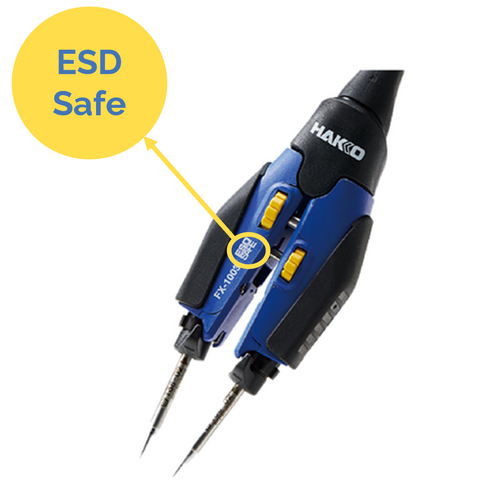Electrostatic Discharge (ESD)

Electrostatic discharge (ESD) is defined as the transfer of electric charge. It occurs when two objects are rubbed against each other, one loses electrons and becomes positively charged while the other gains electrons and becomes negatively charged, creating static electricity. As the negatively charged object comes into contact with the positively charged object, both objects will release electrons rapidly in order to achieve neutrality, resulting in ESD.
The most commonly felt ESD in everyday situation is the shock you get when you brush against another person, or when you touch a metal doorknob. While the static charge is too low to be harmful to humans, it can cause severe damage to electronic components, leading to defects, short-circuits or even causing fire and explosions in hazardous areas.
ESD-SAFE HAKKO PRODUCTS

Most Hakko products are ESD-safe certified - they are made with ESD-safe materials or are able to be grounded safely to reduce ESD. Simply look out for the "ESD-Safe" logo on our products!
The devices are grounded properly and the electrical potential between the tips and the ground does not exceed two millivolts at any time. As for the construction of the devices, ESD safe materials are used. Components that are exempted from ESD requirements which include fuses, power cords, power receptacles and more are insulative for electrical safety.
HAKKO ESD CONTROL

Hakko also has a wide range of ESD control and test products to allow users to test for static potential and prevent it in time.
- 442B ESD Safe Wrist Strap
- FG-450 Static Level Meter
- FG-465 Shoe Tester
- FG-470 Wrist Strap Tester
- Hakko B3586 Body Charging Measurement Plate (For FG-450)